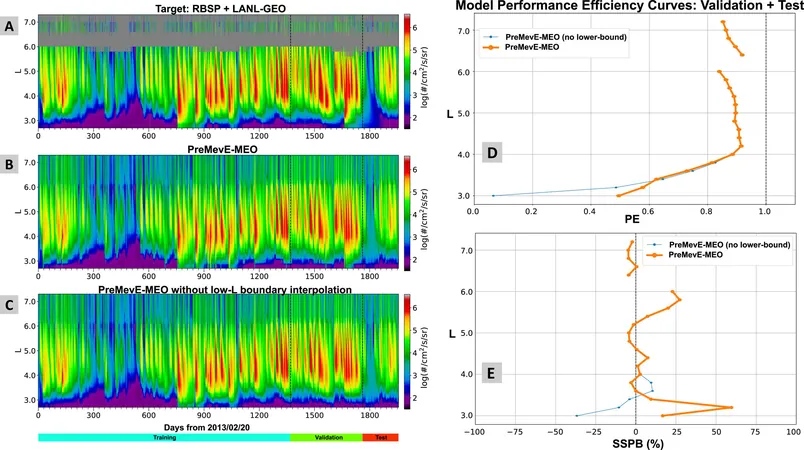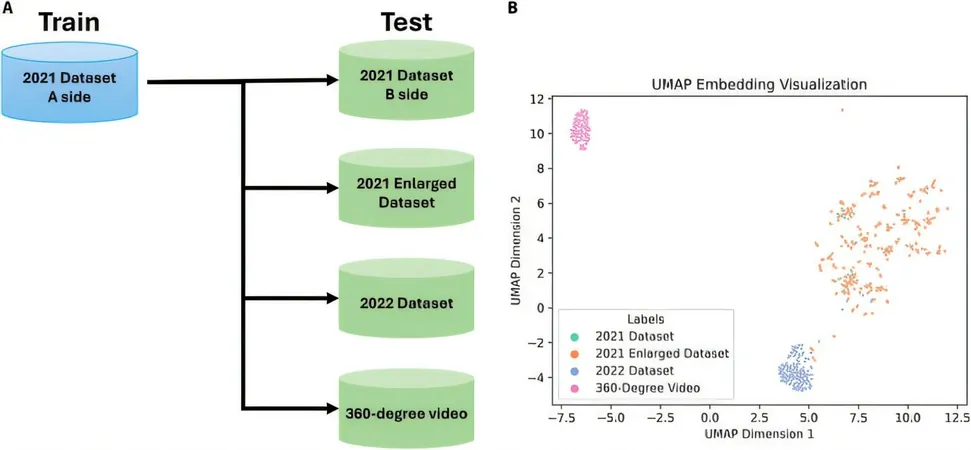
Revolutionary AI Model Set to Transform Space Weather Forecasting!
2024-11-11
Author: Jacob
Introduction
In an exciting breakthrough for space science, researchers from Los Alamos National Laboratory and the University of North Carolina at Chapel Hill are harnessing the power of artificial intelligence to enhance space weather forecasts like never before! Their newly developed predictive model could significantly shield our satellites from “killer electrons”—high-energy particles that travel at nearly the speed of light within Earth's Van Allen belts. These electrons can wreak havoc, causing malfunctions in sensitive equipment orbiting our planet.
Key Insights from the Research
Lead author Yue Chen, a physicist at Los Alamos, stated, “This study proves the feasibility of using the Laboratory's particle data to predict the dynamics of killer electrons.” He emphasized that the project underscores the importance of long-term space observations in the era of artificial intelligence.
Publication and Significance
Published in the journal *Space Weather*, this research represents a significant leap forward in understanding and anticipating space weather phenomena. The groundbreaking forecasting system, known as Predictive MeV Electron—Medium Earth Orbit (PreMevE-MEO), enhances our ability to provide timely and accurate hourly forecasts. By utilizing electron data gathered from a network of 12 GPS satellites operating in medium Earth orbit—as well as from one Los Alamos geosynchronous satellite—the team has crafted a cutting-edge machine-learning algorithm that effectively merges convolutional neural networks with transformers.
Innovative Approach
This innovative approach has allowed researchers to produce high-fidelity predictions based on extensive historical data collected from established infrastructure in medium Earth orbit. This distance is crucial as it is where many navigation and meteorological satellites function, making the model a potential game-changer for operational space weather warnings.
Unique Data Set
Adding another layer to this research is the use of Los Alamos's unique GPS data, which includes X-ray dosimeter particle information that has been publicly available since 2017 and archived by the National Oceanic and Atmospheric Administration. One of the standout features of this dataset is its longevity; it comprises over 100 satellite-years of information—a rarity in the field that allows the application of modern AI techniques to analyze what many refer to as a “big data” resource.
Broader Implications
The implications of this research are vast, not only for satellites but for various human activities influenced by space weather, including telecommunications and global positioning systems (GPS). As we venture further into the cosmos, safeguarding our technological advancements is paramount, positioning this AI-enhanced model as an indispensable tool for future space exploration and monitoring.
Conclusion
With these developments, the future of space weather forecasting seems brighter than ever! Stay tuned to see how these innovations will unfold in the months to come!









 Brasil (PT)
Brasil (PT)
 Canada (EN)
Canada (EN)
 Chile (ES)
Chile (ES)
 España (ES)
España (ES)
 France (FR)
France (FR)
 Hong Kong (EN)
Hong Kong (EN)
 Italia (IT)
Italia (IT)
 日本 (JA)
日本 (JA)
 Magyarország (HU)
Magyarország (HU)
 Norge (NO)
Norge (NO)
 Polska (PL)
Polska (PL)
 Schweiz (DE)
Schweiz (DE)
 Singapore (EN)
Singapore (EN)
 Sverige (SV)
Sverige (SV)
 Suomi (FI)
Suomi (FI)
 Türkiye (TR)
Türkiye (TR)